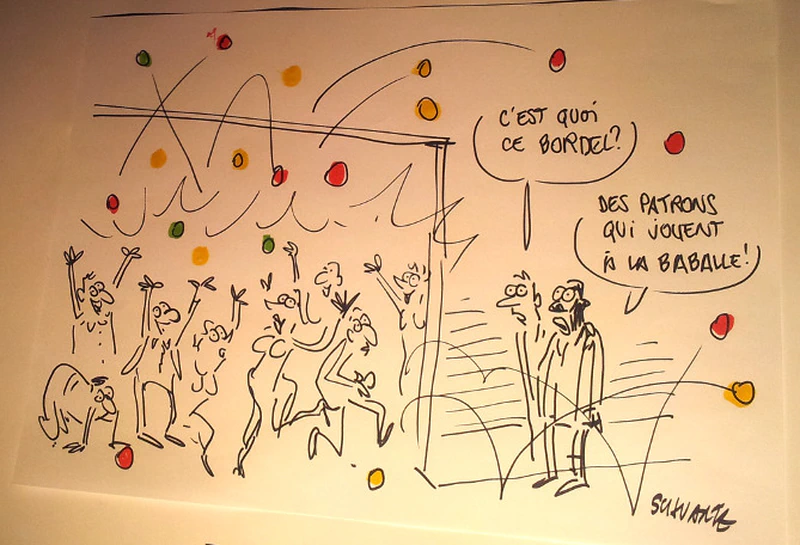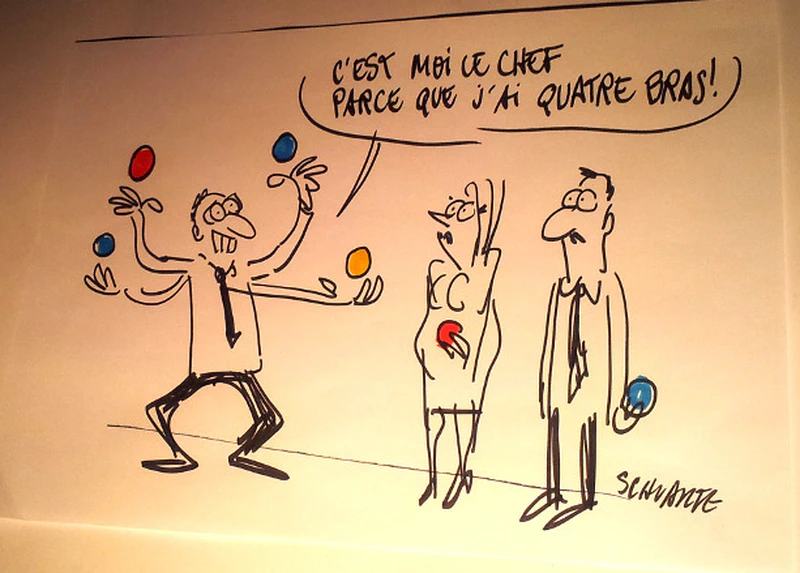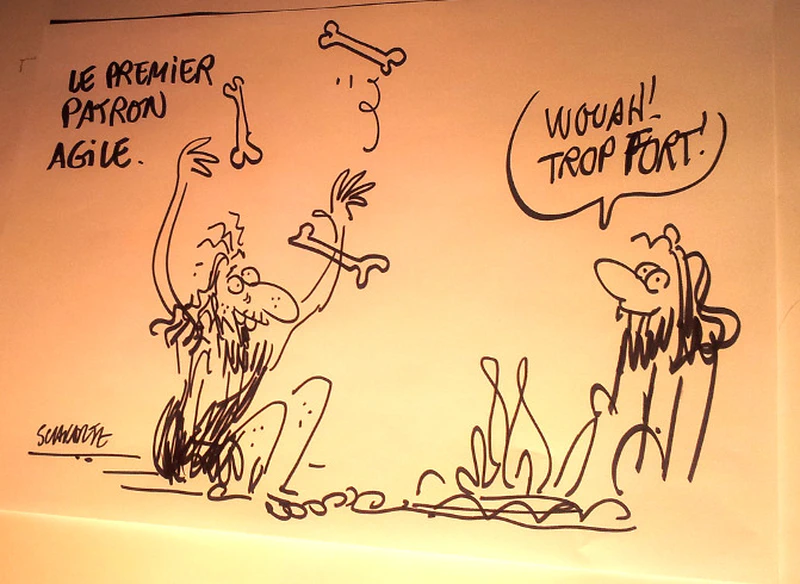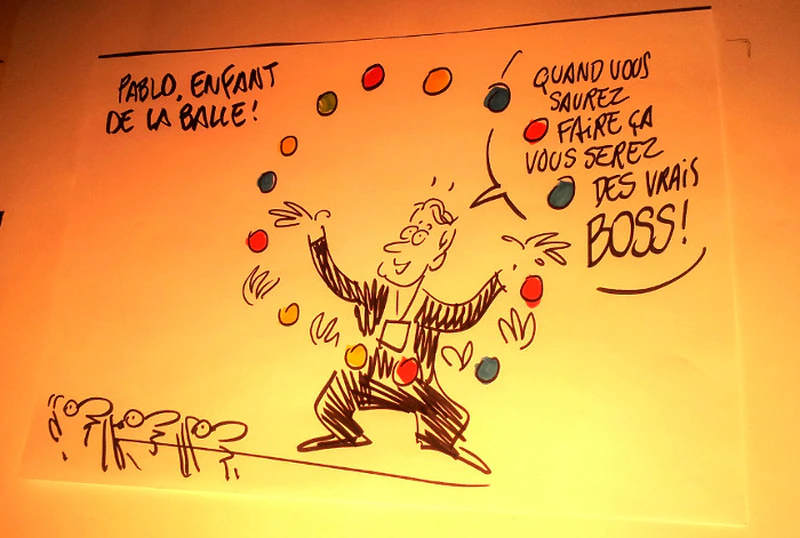…better known as the “Scrum ball point game” by Boris Gogler. This innovative game offers a great learning experience of a scrum team. I’ve been using it quite regularly for some time now (in training or during a project where you are the agile hero). And last Friday I had the chance to participate in a meeting of the Young Leaders Center (CJD) and propose it to 300 people…
Quite a story that gives me the opportunity to revisit the lessons of this game. So thanks to Boris Gogler for this game. Thanks also to him for not sinking into that petty mercantilism of innovation games where now to draw a boat you would supposedly need certification.
Game Objective
To transit the most balls through a system in a given time. The system is your team: so you must pass the most balls within the team. The given time is usually around 2 minutes. At each attempt the team announces its estimate: the number of balls it thinks it can transit through the system (the group !) during the 2 minutes. At the end of each attempt we grant ourselves a small moment (1 minute, 1 minute 30 depending on the case) to question ourselves: how can we do better? how can we improve? We generally do 5 iterations which therefore contain: estimation, realization, introspection.
Constraints
Yes, that’s life, there are constraints.
- You are a team.
- Between each team member the balls take to the air. (That is to say that one cannot pass the ball from hand to hand without at some point the ball being alone in the air).
- No pass to your direct neighbor. (No pass to your nearest neighbor, it’s simple right?).
- The starting point is the arrival point (The person who plunges their hand into the bag to grab a ball is also the one who places the balls that have traveled through the system in another bag).
- All team members must touch the ball only once except the starting point which is also the arrival point. (And only once! which doesn’t mean only one at a time…).
- A ball that falls, touches the ground, or that doesn’t respect these rules is lost.
- Iteration = 2 minutes, introspection = 1 minute 30 & estimation = 30s (or less, it’s rather a buffer).
- 5 iterations
Some Instructions for Facilitators
Warning the following will reveal some aspects of the game that a future player should not know.
You can use these instructions that I created for the facilitators who accompany me during big events (see below…).
- Try to be between 12 (min) and 20 players (max) per team, and to have between 40 and 80 balls per team (different balls are a plus: tennis, ping pong, soft, big, etc.)
- Above all don’t start by telling the players: “get in a circle” because you are already strongly inducing a system. Rather suggest to them: “please gather over here”.
- From the third or fourth iteration introduce the unexpected (ask as a client for a specific series of balls, see the instructions in pdf above).
The Debrief Questions
At the end of the game naturally we debrief.
- What happened?
- What was your best iteration?
- Where did the improvement come from? Did we work harder? faster?
- Did the team’s self-organization work well?
- Where did the “leadership” come from? with what style?
- Application at your place?
Other themes: Natural velocity, inspection & adaptation (continuous improvement), theory of constraints, securing failure, eliminating waste, “pull & push”, iteration protection, heroes ?, team & leadership, planning & estimation, etc.
The Learnings and Observations
What can we take away from this game? Lots of things, and each game has its own conclusions, but here are the main points that emerge regularly:
- We talk about system: we will observe a performance dependent on the system and not “on individuals”, or on a desire to go faster, stronger. It’s by changing the system that performance changes. We can go faster or stronger, we can become expert in a system but it has limits quite quickly.
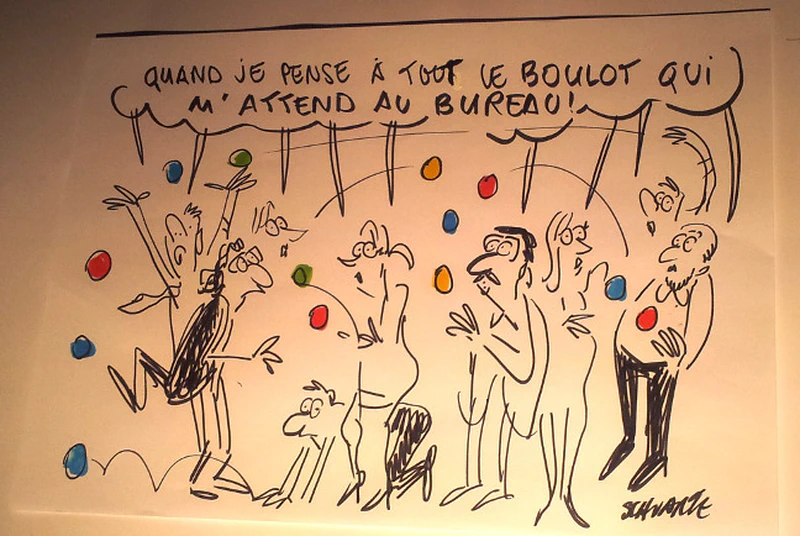
- Thus the “hero” has only limited impact. It’s rather the weak link that we must pay attention to. In relation to Goldratt’s theory of constraints: seek to first fix the system’s biggest problem, not all at once because the other problems will reshape themselves following the resolution of the main one.
- Initial estimates are often catastrophic (in one sense or the other: too low, too high). Especially the first (which allows me to restate my favorite quote: “no plan survives first contact with the enemy” –Von Moltke). But gradually the velocity, the performance linked to the established system is made visible. As teams manage to improve this system we thus easily observe scores in 5 iterations going from 0 in the first iteration to 60 in the fifth. Nice gap that should be noted. When we observe a performance that stabilizes we can plan (normally it oscillates around 3 iterations if the system doesn’t change too much).
- These improvements come from practice and a phase of introspection devoted to improvement. This improvement is possible because we operate in short cycles: 2 minutes, 5 times. And that error, necessary for experimentation itself necessary for improvement, is all the more accepted as the cycle is short because thus the failure is not a drama.
- We will observe how this introspection and these improvement axes are discussed within the team (natural leadership, shared agreement of the “decider” type from Jim McCarthy, etc.): it’s generally a good implementation of self-organization (really not so hard) and from which emerges a collective intelligence.
- If the teams are large (around 15 or 20 max) we discover that it’s more difficult to communicate and improve. We must therefore favor small teams.
- You will unfortunately observe the resistance of people to wanting to change a system (“we could get closer…”), you will observe the fear of transgressing rules that don’t exist (“we can launch several balls into the system at once???”), to think differently (“am I allowed to hang this bag around my neck ?”), etc. It’s muscle memory…
- You will observe why management loves Scrum so much: this ability to go all out, in sprint, in realization, and you will question your teams about a sustainable pace. It’s generally rarely the case spontaneously.
- This game is sometimes criticized by saying: “it’s a mess, it’s not efficient”. Usually it’s an illusion of mess: it yells, it moves, in short it lives. we see the systems improve, the performance increased. But well, you can hear this criticism.
- This game is sometimes criticized by saying: “But it’s Taylorism”. With large teams the majority of team members are quite passive, it’s true. Otherwise it’s a cacophony, or otherwise the implementation is too improbable (everyone would do everything at once). But we must remind people that no one imposes this passivity on them, that at any time they can take initiative, it’s fundamental.
- Hunt, question inconsistent scores, fluctuations too unexpected. Have fun comparing estimates and results…
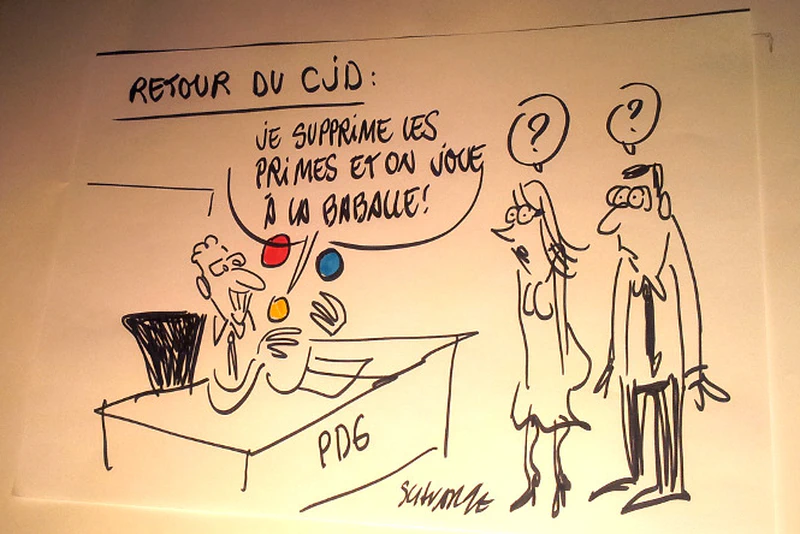
- We could even make a cynefin reading of this game: first iteration, we discover the harsh reality of balls in the system. We are in the reactive, unpredictable, we need “command & control” there! Someone takes the lead and proclaims: “let’s form a circle !”. The storm of the first iteration passed we will call on the “experts”: it’s a predictable and complicated system that appears: this form will be effective, or that one. Be careful not to get eaten by experts who may never agree, or won’t think “out of the box”. Finally when we introduce the unexpected or if your system has reached its limit it’s the time for emergent practices (complex, unpredictable): what if we tried that? etc etc.
Antithesis
The antithesis of this game would have been to launch into 10 or 15 minutes of realization (5 iterations of 2 minutes grouped into 1, with or without the introspection phase) based on a definitive and fixed plan for implementation and led by a supreme leader. The first round would have been perhaps satisfactory (if we didn’t waste too much time preparing the plan…). But quickly we would have had:
- Either a stagnation of performance due to the system, and the system being fixed, it was the end, fossilization.
- Or a degradation due to the sclerosis of the system, because all actors in the system being passive because submissive, no doubt that at the slightest grain of sand no one would have had the desire or even the right to use their intelligence to overcome it…
- Still would the plan have been good which is far from certain (once again: “no plan survives first contact with the enemy” –Von Moltke)
Do you see the metaphor?
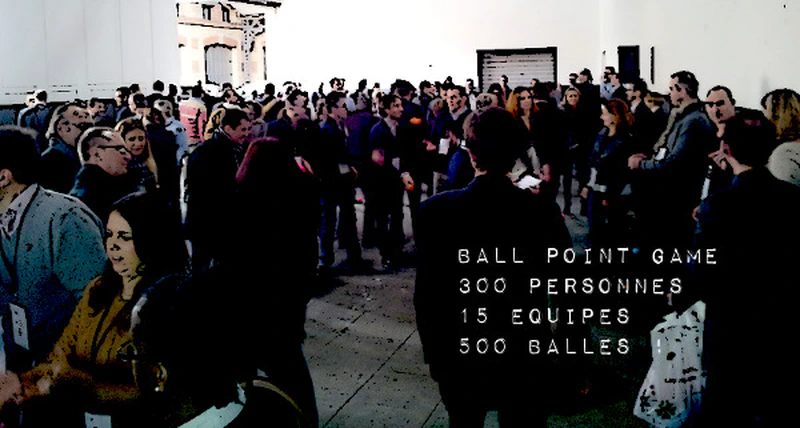
300 (not the movie), the young leaders!
So last Friday (March 22, 2013). I had the pleasure of doing a “scrum ball point game” with ~300 participants, and therefore 15 teams of 20 people and 500 balls. Yes it was outwardly a mess, but only outwardly because the teams never stopped improving. (Naturally in the action I didn’t take any good photos…). Thanks to all the facilitators, to Jérôme and to the Young Leaders Center (CJD) for making this possible on the occasion of their meeting around the agile leader (and which will very soon be the subject of another blog post, because observing 300 leaders talking about agility is worth the trip).

the scores went up to 50 (they picked up balls from the ground from other teams I imagine). The CJD had chartered 500 balls in its logo colors.

And there it debriefs.

Some Caricatures
The CJD also had the very good idea of bringing Loïc Schvartz, a Rennes cartoonist who regularly collaborates with Charlie hebdo, Marianne and Ouest France, to sketch the conferences and workshops… Here are the results of this first “scrum ball point game”…
The last three are evocations of the small speech that I delivered afterwards relying on these slides.
Click on them for better resolution.
